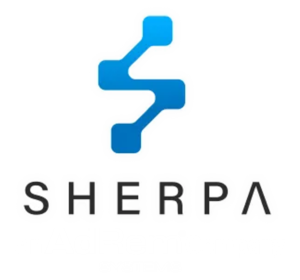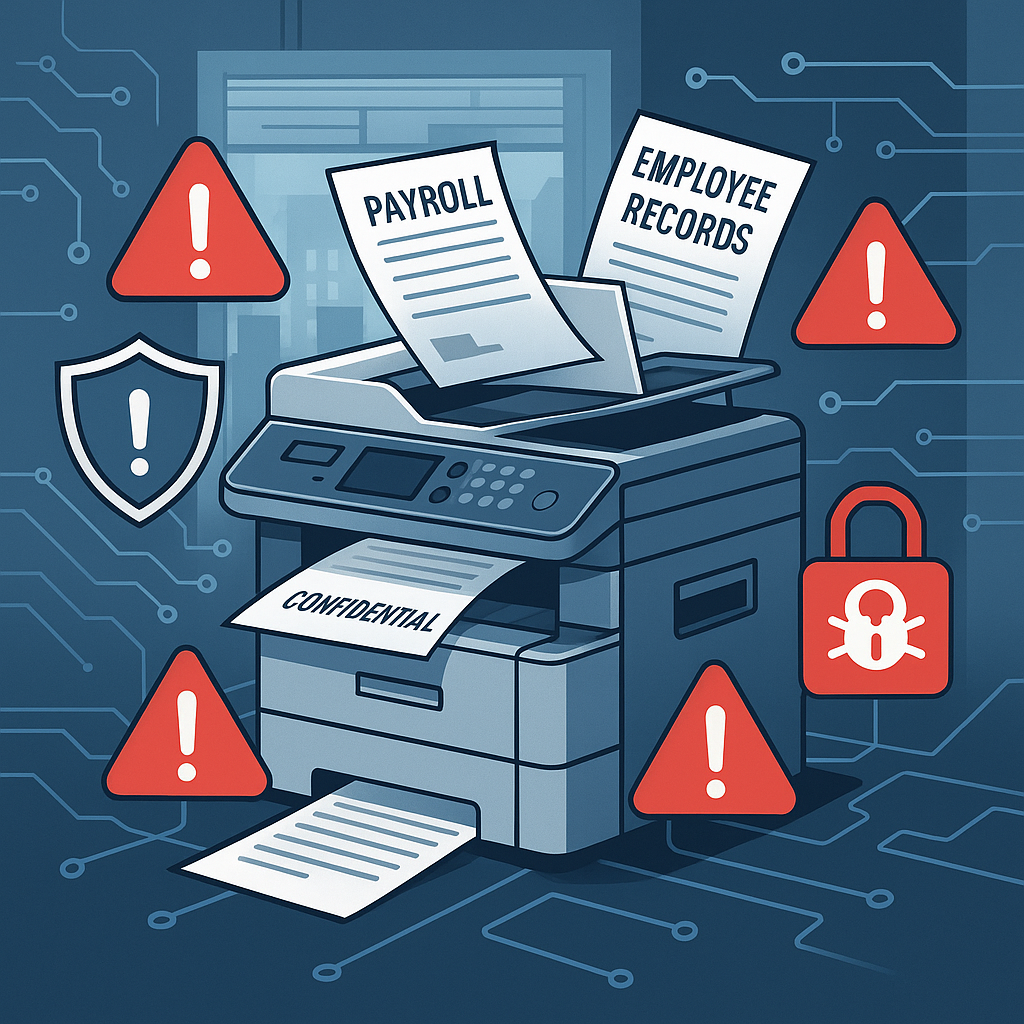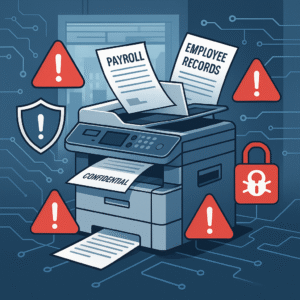When most compliance professionals think about cybersecurity risks, they tend to focus on the obvious: phishing emails, unauthorized access, weak passwords, or unpatched endpoints. But there’s one device that’s often overlooked, silently threatening your entire compliance strategy: your office printer.
Yes, that multifunction device in the corner might be the unmonitored gateway cybercriminals use to compromise your network, exfiltrate sensitive data, and jeopardize regulatory compliance.
Why Compliance Directors Should Worry About Printers
Print infrastructure is frequently ignored in cybersecurity risk assessments, even though printers store, transmit, and process protected data. From payroll and HR files to sensitive vendor contracts and PHI/PII, these devices handle high-value information every day—often with minimal oversight.
In fact, a 2020 experiment by Cybernews found that over half of 50,000 of printers tested were remotely compromised, many using default settings and unpatched firmware. These vulnerabilities aren’t theoretical—they’re actively exploited.
Key Compliance Risks Posed by Printers
Here’s what your compliance program may be missing if printers aren’t included in your risk mitigation strategy:
- Data Residue and Storage Leaks
Many printers cache documents on internal storage—especially multifunction models. Every time someone prints, scans, or copies a document, a digital version may be stored on the device. This includes highly sensitive information like payroll files, employee records, contracts, and even confidential client data. If a hacker gains access, they can silently steal, reprint, or exfiltrate these documents—without alerting your systems or personnel. - Default Credentials Still in Use
Devices shipped with “admin/admin” or “123456” logins often remain unchanged. This is low-hanging fruit for attackers. - Unsegmented Network Access
Once inside a printer, attackers may pivot to connected systems—installing malware or intercepting credentials from nearby devices. - Unencrypted Print Jobs
Without secure print protocols in place, sensitive documents may be captured mid-transit. Legal records, PHI, CUI—all exposed without a trace. - Remote Eavesdropping & Exfiltration
Printers with scan-to-email or cloud-sync features can be silently exploited to siphon off scanned files or email correspondence. - Outdated Firmware Equals Open Doors
Printers that aren’t regularly patched become long-term liabilities. Unpatched firmware is a known vector for targeted attacks. - Disposal Without Data Sanitization
Improper decommissioning of printers leaves behind stored files, making data recovery—and compliance failure—shockingly easy.
The Compliance Consequences of Printer Neglect
Leaving your print infrastructure unmanaged isn’t just a cybersecurity risk—it’s a compliance failure waiting to happen.
Many regulatory frameworks require organizations to protect data in transit and at rest, monitor systems for unauthorized access, and properly sanitize or destroy devices that store sensitive information. Leave your printers out of the equation and your organization could unknowingly violate:
- HIPAA – Protected Health Information (PHI) printed or scanned without access controls or encryption could result in a breach subject to mandatory reporting and fines.
- CMMC / NIST 800-171 – Uncontrolled printer access or failure to encrypt Controlled Unclassified Information (CUI) violates access control and system integrity requirements.
- GLBA / SOX / PCI-DSS – Financial records, customer data, and cardholder information processed via unsecured printers could trigger costly audits or penalties.
- State Data Protection Laws – Discarded printers that retain sensitive data violate strict data disposal and breach notification rules of states such as California, New York, and Virginia.
Even a single unsecured device can create a chain reaction of noncompliance—especially during audits, investigations, or cybersecurity incidents. For defense contractors, healthcare providers, or financial institutions, that can mean lost certifications, regulatory fines, or loss of customer trust.
A Compliance-Centered Approach to Print Security
To align printer security with your broader compliance obligations (such as CMMC, HIPAA, or NIST 800-171), take these steps immediately:
- Change Default Logins Immediately: Establish strong, unique admin credentials and restrict access to device settings.
- Update Firmware Routinely: Treat printers like any other endpoint. Apply all patches and firmware updates in a timely, documented fashion.
- Segment and Firewall Your Devices: Place printers on a separate VLAN and apply firewall rules to control traffic in and out of print devices.
- Encrypt Print Traffic: Deploy secure print solutions with user authentication and end-to-end encryption.
- Restrict Access with Role-Based Controls: Ensure only authorized personnel can use specific printer functions. Consider PINs or badge-based authentication.
- Wipe Print Logs and Cached Files Regularly: Set scheduled deletion intervals for stored documents and monitor for abnormal behavior.
- Include Printers in Your Risk Assessments: Document printer use, configurations, and patch levels as part of your compliance controls.
Printers Are a Compliance Asset—If You Manage Them Right
If your organization is working toward or maintaining a compliance framework like CMMC, HIPAA, SOC 2, or NIST, leaving your printer unmanaged is a critical oversight. At Sherpa, we help organizations close these hidden gaps. Our Compliance Risk Assessments include comprehensive print security reviews—ensuring your data pathways, including physical devices, aren’t your weakest link.
Don’t Let an Overlooked Printer Derail Your Compliance Efforts
Printers may seem low-risk—but in the eyes of auditors, regulators, and attackers, they’re anything but.
Let Sherpa help you assess your print infrastructure as part of a compliance-aligned risk review. Our team identifies hidden gaps, helps implement defensible controls, and ensures your organization’s office equipment supports your compliance objectives. Schedule Your Compliance Risk Assessment Today.



